 The world’s top handset maker Nokia has announced that it expects to start shifting mobile devices using the WiMAX Internet technology by early 2008.
The world’s top handset maker Nokia has announced that it expects to start shifting mobile devices using the WiMAX Internet technology by early 2008.
WiMAX (or Worldwide Interoperability for Microwave Access if you’re a spoddy type) lets laptops, phones and other suitably equipped mobile devices access the Internet at Billy Whizz speeds.
The technology uses a licensed spectrum to offer long-range (we’re talking kms), point-to-point connections to the web from the service provider to the end user, with Nokia saying that they plan to bring their first WiMAX enabled mobile device to market in early 2008.
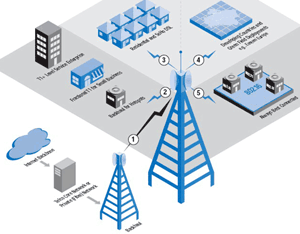 Nokia’s numero uno handset rival, Motorola, has announced that it fancies a piece of the WiMAX action too, saying that they’ll also be bringing a WiMAX enabled mobile phone to market in 2008.
Nokia’s numero uno handset rival, Motorola, has announced that it fancies a piece of the WiMAX action too, saying that they’ll also be bringing a WiMAX enabled mobile phone to market in 2008.
Intel, Nokia, Samsung and Motorola are all feeling the love for the open-standard WiMAX. The technology can be used as an alternative wireless broadband Internet connection for 3G users, which is handy because net access on 3G mobile networks can slow right down if networks fill up with yakking voice callers.
WiMAX should considerably reduce the cost of wireless broadband – up to 10 times cheaper than current third-generation cellular telephony networks – but the technology isn’t apparently too hot for handling wireless voice calls.
WiMAX looks good when it comes to pricing: the radio spectrum for WiMAX networks is rented out at cheaper rates by regulators than the 3G mobile phone spectrum, and WiMAX equipment vendors reckon that infrastructure and handheld devices work out cheaper than 3G systems too.
 A planned rollout will veritably bathe the City in luverly Wi-Fi rays, letting around 350,000 workers wander all over the Square Mile with uninterrupted wireless access.
A planned rollout will veritably bathe the City in luverly Wi-Fi rays, letting around 350,000 workers wander all over the Square Mile with uninterrupted wireless access. “We have been meeting a lot of the big financial institutions in the area and have even found that the network is available in a lot of their boardrooms, so we think there will be a corporate use for it as well,” he added.
“We have been meeting a lot of the big financial institutions in the area and have even found that the network is available in a lot of their boardrooms, so we think there will be a corporate use for it as well,” he added.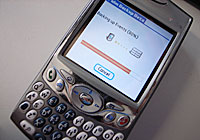 The Palm Backup Beta service can be downloaded
The Palm Backup Beta service can be downloaded 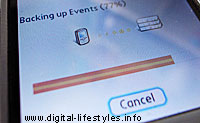 An activation letter is sent to your email account, but you can start the back up on your Treo straight away (but you must activate your Palm account within 7 days otherwise your account will be closed).
An activation letter is sent to your email account, but you can start the back up on your Treo straight away (but you must activate your Palm account within 7 days otherwise your account will be closed).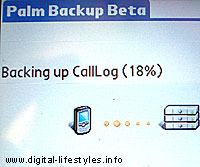 A back up of your data will then be saved to Palm’s secure server as scheduled – so long as there is wireless data coverage available (if it fails to find a connection, it will try again at the next scheduled time).
A back up of your data will then be saved to Palm’s secure server as scheduled – so long as there is wireless data coverage available (if it fails to find a connection, it will try again at the next scheduled time).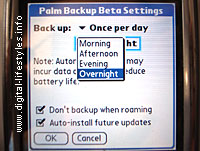
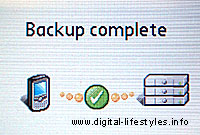 Palm Backup Beta service currently supports Palm Treo 700p, Treo 680 and Treo 650 and there’s no news yet about release date or pricing.
Palm Backup Beta service currently supports Palm Treo 700p, Treo 680 and Treo 650 and there’s no news yet about release date or pricing. That all changes today when the full version becomes available for download through the Wii Shop Channel – the area on the console where additional applications and services are accessed.
That all changes today when the full version becomes available for download through the Wii Shop Channel – the area on the console where additional applications and services are accessed.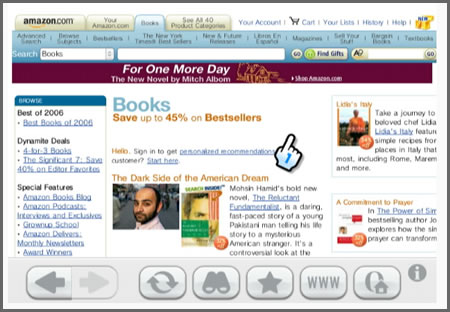

 In the same way that UK frequencies are being freed up by analogue TV going digital, a big chunk of valuable frequency will also be coming up for grabs in the US too. The big difference is that the US one is coming up a lot sooner, with the US government having mandated that their analogue switch off occurs on 19 Feb 2009.
In the same way that UK frequencies are being freed up by analogue TV going digital, a big chunk of valuable frequency will also be coming up for grabs in the US too. The big difference is that the US one is coming up a lot sooner, with the US government having mandated that their analogue switch off occurs on 19 Feb 2009. The 700-megahertz frequency is highly favoured as it has a significant capacity, good range and can easily penetrate buildings and other structures.
The 700-megahertz frequency is highly favoured as it has a significant capacity, good range and can easily penetrate buildings and other structures.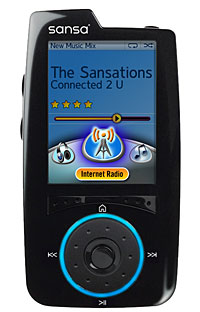 After connecting the Sansa Connect media player to the Internet via Wi-Fi, users will be able to listen to LAUNCHcast Internet radio, rummage through Flickr photos and check out what Yahoo Messenger friends and nearby Sansa Connect owners are grooving to.
After connecting the Sansa Connect media player to the Internet via Wi-Fi, users will be able to listen to LAUNCHcast Internet radio, rummage through Flickr photos and check out what Yahoo Messenger friends and nearby Sansa Connect owners are grooving to. “We see this as a very strong partnership with Yahoo,” purred top SanDisk marketing bod Eric Bone, adding that he saw his company progressing from “fast-follower mode to a technical-leadership mode” in a market still dominated by the ubiquitous iPod.
“We see this as a very strong partnership with Yahoo,” purred top SanDisk marketing bod Eric Bone, adding that he saw his company progressing from “fast-follower mode to a technical-leadership mode” in a market still dominated by the ubiquitous iPod.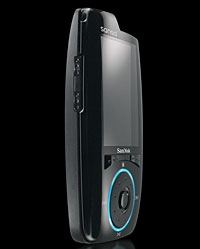 As well as wirelessly connecting to Yahoo’s Music service, the Connect supports MP3s and DRM WMAs provided by other services like Rhapsody, but you’ll have to get out Ye Olde cable to transfer the music from your desktop.
As well as wirelessly connecting to Yahoo’s Music service, the Connect supports MP3s and DRM WMAs provided by other services like Rhapsody, but you’ll have to get out Ye Olde cable to transfer the music from your desktop. Three UK operators will be taking part, Orange, Vodafone and 3 giving subscribers to the trial the ability to watch BBC One, BBC News 24 and BBC Three streamed on their mobiles. Beyond some sports programmes and programmes where they don’t have the necessary rights.
Three UK operators will be taking part, Orange, Vodafone and 3 giving subscribers to the trial the ability to watch BBC One, BBC News 24 and BBC Three streamed on their mobiles. Beyond some sports programmes and programmes where they don’t have the necessary rights.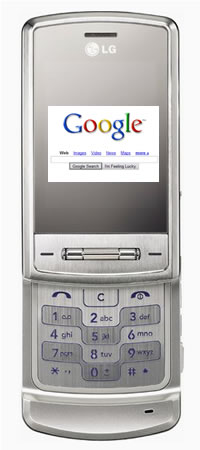 LG have committed to release at least ten new mobile phone and will jointly market them as LG-Google handsets.
LG have committed to release at least ten new mobile phone and will jointly market them as LG-Google handsets. Try as we might, we can’t think of the last time we said to ourselves, “You know what? We could really use a Bluetooth enabled cushion,” but the good news is that if ever such a thought should cross our minds, urbantool.com has the answer.
Try as we might, we can’t think of the last time we said to ourselves, “You know what? We could really use a Bluetooth enabled cushion,” but the good news is that if ever such a thought should cross our minds, urbantool.com has the answer.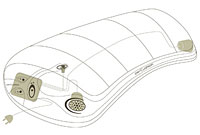 Powered by a rechargeable lithium ionic battery, call status is displayed via a series of LEDs, which indicate if the, err, pillow is in active standby mode or taking an incoming call.
Powered by a rechargeable lithium ionic battery, call status is displayed via a series of LEDs, which indicate if the, err, pillow is in active standby mode or taking an incoming call. Although we couldn’t argue with anyone claiming that it’s the most comfortable phone on the planet, the idea of someone actually sitting at home talking into a cushion would suggest the presence of magic mushrooms to us.
Although we couldn’t argue with anyone claiming that it’s the most comfortable phone on the planet, the idea of someone actually sitting at home talking into a cushion would suggest the presence of magic mushrooms to us.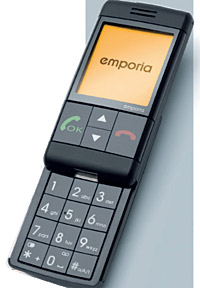 On display at the CeBit hi-tech fair last week was a new mobile phone offering a built-in emergency button.
On display at the CeBit hi-tech fair last week was a new mobile phone offering a built-in emergency button.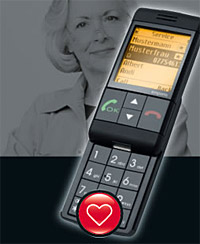 The phone comes with extra loud volume options for speaker and ring tones and has a powerful vibration alert to ensure the owner knows that someone’s calling.
The phone comes with extra loud volume options for speaker and ring tones and has a powerful vibration alert to ensure the owner knows that someone’s calling.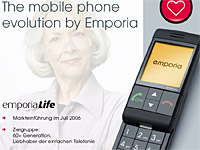 There seems to be some debate about just how old the target market actually is: the
There seems to be some debate about just how old the target market actually is: the